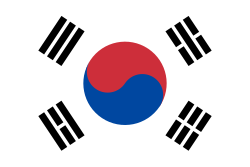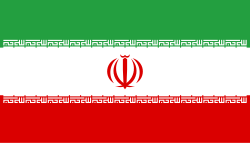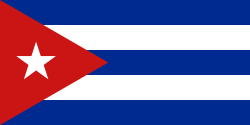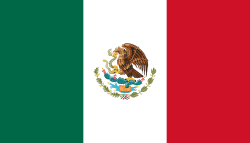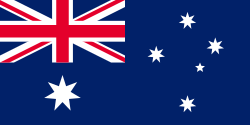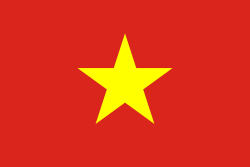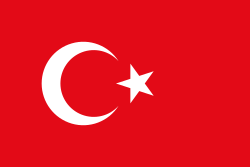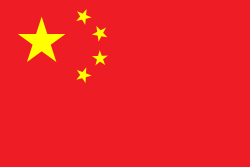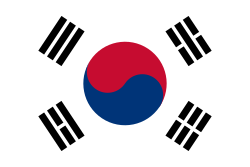Taekwondo na Letních olympijských hrách 2000
| Taekwondo na Letních olympijských hrách 2000 | |||||||||||||||||
|---|---|---|---|---|---|---|---|---|---|---|---|---|---|---|---|---|---|
| Základní údaje | |||||||||||||||||
| Pořadatel | Mezinárodní federace taekwondo Mezinárodní olympijský výbor | ||||||||||||||||
| Dějiště | Homebush Bay | ||||||||||||||||
| Datum | 27. září - 30. září 2000 | ||||||||||||||||
| Soutěže | 8 (4 muži, 4 ženy) | ||||||||||||||||
| Startující | 102 (48 žen, 54 mužů) | ||||||||||||||||
| Soutěže | |||||||||||||||||
| |||||||||||||||||
| |||||||||||||||||
Taekwondo zažilo na Letních olympijských hrách 2000 svou olympijskou premiéru. Soutěže se konaly od 27. do 30. září v Státním sportovním středisku (anglicky State Sports Centre) v Olympijském parku v Homebush Bay.
Průběh soutěží
Po zařazení do programu olympijských her v Soulu v roce 1988 a olympiády 1992 v Barceloně jako ukázkový sport, bylo taekwondo schváleno jako oficiální olympijský sport v roce 1994 na 103. zasedání Mezinárodního olympijského výboru v Paříži.[1]
Stříbrná medailistka z pérové váhy Trần Hiếu Ngân byla první sportovkyní z Vietnamu, která kdy získala olympijskou medaili.[2]
Soutěže poznamenaly spory o výsledky. Dán Muhammed Dahmani protestoval proti výsledku svého zápasu prvního kola welterové váhy do 80 kg tím, že odmítl opustit žíněnku a musel být vyveden. Francouz Pascal Gentil neúspěšně podal formální protest proti výsledku semifinále těžké váhy nad 80 kg proti Korejci Kimovi. Australanka Lauren Burnsová vyhrála v semifinále nad mistryní světa Ťi Šu-žu z Tchaj-wanu, i když zápas skončil 3:3 a rozhodnout měla podle regulí náhlá smrt. Když se totéž stalo ve finále mužské pérové váhy (do 68 kg) a kolumbijský rozhodčí Flavio Pérez za konečného stavu 1:1 odebral jeden bod Korejci Sinovi za dříve udělené dva trestné půlbody, byl sice potrestán tím, že rok nesměl rozhodovat žádné soutěže, ale výsledek zůstal v platnosti.[3]
Medailisté
Muži
Ženy
| Kategorie | |||
|---|---|---|---|
| do 49 kg | |||
| do 57 kg | |||
| do 67 kg | |||
| nad 67 kg |
Přehled medailí
| Pořadí | Země | Celkově | |||
|---|---|---|---|---|---|
| 1. | 3 | 1 | 0 | 4 | |
| 2. | 1 | 1 | 0 | 2 | |
| 3. | 1 | 1 | 0 | 2 | |
| 4. | 1 | 0 | 0 | 1 | |
| 5. | 1 | 0 | 0 | 1 | |
| 6. | 1 | 0 | 0 | 1 | |
| 7. | 0 | 1 | 0 | 1 | |
| 8. | 0 | 1 | 0 | 1 | |
| 9. | 0 | 1 | 0 | 1 | |
| 10. | 0 | 1 | 0 | 1 | |
| 11. | 0 | 1 | 0 | 1 | |
| 12. | 0 | 0 | 2 | 2 | |
| 13. | 0 | 0 | 1 | 1 | |
| 14. | 0 | 0 | 1 | 1 | |
| 15. | 0 | 0 | 1 | 1 | |
| 16. | 0 | 0 | 1 | 1 | |
| 17. | 0 | 0 | 1 | 1 | |
| 18. | 0 | 0 | 1 | 1 | |
| Celkem | 8 | 8 | 8 | 24 | |
Odkazy
Reference
- ↑ World Taekwondo Federation : Introduction [online]. WTF, 2004 [cit. 2008-05-28]. Dostupné online. (anglicky)
- ↑ Why the Olympics? [online]. VietNamNet Bridge, 2008-03-20 [cit. 2008-05-28]. Dostupné v archivu pořízeném dne 2008-05-24. (anglicky)
- ↑ WALLECHINSKY, David. The Complete Book of the Olympics. London: Aurum Press, 2004. 1171 s. ISBN 1-85410-990-1. S. 627–628. (anglicky)
Literatura
- Official Report of the XXVII Olympiad – Results. 1.. vyd. Sydney: International Olympic Committee, 2001. Dostupné v archivu pořízeném dne 2011-05-14. ISBN 0-9579616-1-8. Kapitola Taekwondo. (anglicky)
Související články
Média použitá na této stránce
Pictograms of Olympic sports - Taekwondo. This is unofficial sample picture. Images of official Olympic pictograms for 1948 Summer Olympics and all Summer Olympics since 1964 can be found in corresponding Official Reports.
Olympic Rings without "rims" (gaps between the rings), As used, eg. in the logos of the 2008 and 2016 Olympics. The colour scheme applied here was specified in 2023 guidelines.
Olympic Rings without "rims" (gaps between the rings), As used, eg. in the logos of the 2008 and 2016 Olympics. The colour scheme applied here was specified in 2023 guidelines.
Chinese Taipei Olympic Flag. According to the official website of Chinese Taipei Olympic Committee, Blue Sky(circle) & White Sun(triangles) above the Olympic rings is neither the National Emblem of the Republic of China, nor the Party Emblem of Kuomintang (KMT), but a design in between, where the triangles do not extend to the edge of the blue circle, as registered at International Olympic Committee in 1981 and digitally rendered in 2013. Besides, the blue outline of the five-petaled plum blossom is broader than the red one. Moreover, the CMYK code of the blue one and the Blue Sky & White Sun is "C100-M100-Y0-K0", and different from the Olympic rings (C100-M25-Y0-K0). Note that it's the only version recognized by IOC.
Chinese Taipei Olympic Flag. According to the official website of Chinese Taipei Olympic Committee, Blue Sky(circle) & White Sun(triangles) above the Olympic rings is neither the National Emblem of the Republic of China, nor the Party Emblem of Kuomintang (KMT), but a design in between, where the triangles do not extend to the edge of the blue circle, as registered at International Olympic Committee in 1981 and digitally rendered in 2013. Besides, the blue outline of the five-petaled plum blossom is broader than the red one. Moreover, the CMYK code of the blue one and the Blue Sky & White Sun is "C100-M100-Y0-K0", and different from the Olympic rings (C100-M25-Y0-K0). Note that it's the only version recognized by IOC.
Flag of Iran. The tricolor flag was introduced in 1906, but after the Islamic Revolution of 1979 the Arabic words 'Allahu akbar' ('God is great'), written in the Kufic script of the Qur'an and repeated 22 times, were added to the red and green strips where they border the white central strip and in the middle is the emblem of Iran (which is a stylized Persian alphabet of the Arabic word Allah ("God")).
The official ISIRI standard (translation at FotW) gives two slightly different methods of construction for the flag: a compass-and-straightedge construction used for File:Flag of Iran (official).svg, and a "simplified" construction sheet with rational numbers used for this file.
Flag of Australia, when congruence with this colour chart is required (i.e. when a "less bright" version is needed).
See Flag of Australia.svg for main file information.Flag of Canada introduced in 1965, using Pantone colors. This design replaced the Canadian Red Ensign design.
Flag of South Korea from October 1997 to May 2011. In May 2011, the exact colors were specified into their current shades.










